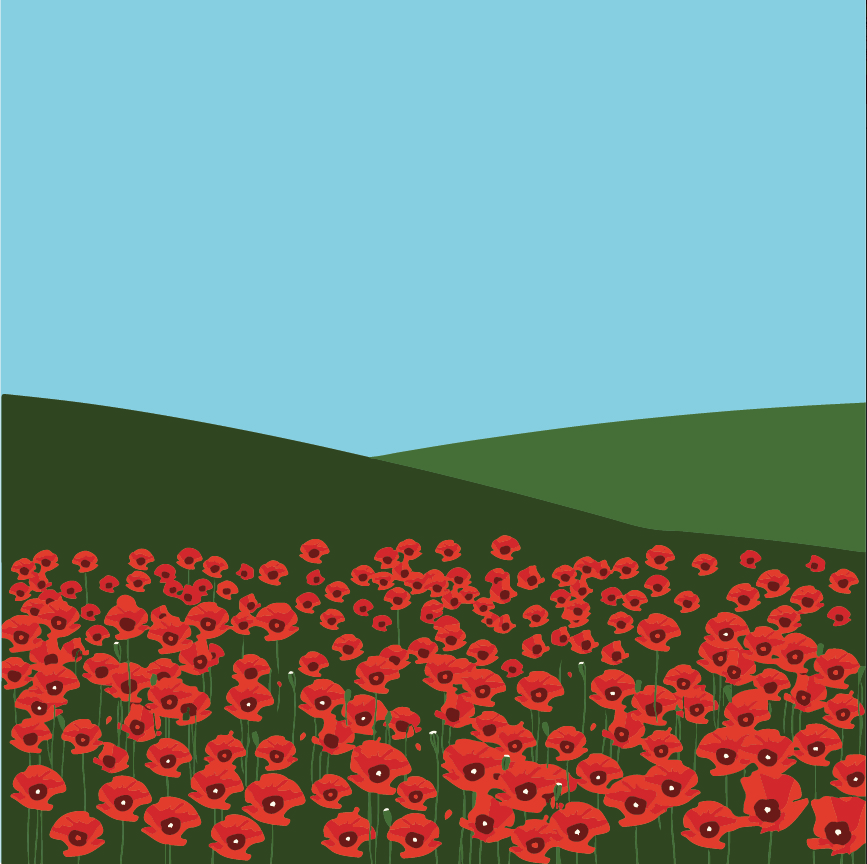While overshadowed by the events of World War II, World War I is still remembered in history as “the war to end all wars” that brought change to the modern world. From technology and sciences to art work and media, the effects of WWI continue to teach people about the conflicts in Europe and the impact it had on the world.
Nov. 11, 2018 will mark the 100th anniversary of Armistice Day, which celebrates the armistice that brought the ceasefire between the Allied and Central forces and ended World War I in 1918. World War I started in 1914 after the death of Austrian-Hungarian emperor Franz Ferdinand. This single event led the system of alliances within Europe to the brink of war. The alliances would bring countries from all over the world such as Britain, Germany, France, Canada, the Ottoman Empire, Japan and the United States into war with each other. This conflict would result in the deaths of over 19 million people and show both the ferocity and resourcefulness of humanity.
According to KSHB in Kansas City, the National World War I Museum broadcasted an illuminated exhibit of poppy flowers on the monuments in the days leading up to Armistice Day. Poppy flowers are regarded as a symbol of peace, as written by Canadian John McCrae in his poem “In Flanders Field.” America didn’t join in the war until 1917, but there were accounts of Americans, like author Ernest Hemingway, fighting in volunteer units in the French or English armies. The CEO of the WWI museum, Matt Naylor, remarked the importance of the illumination for the Americans that fought and died in the war.
“Us bathing the Memorial in poppies is a moving tribute to those who served and reminds us of their sacrifice,” said Naylor.
One of the notable areas of change brought by World War I was technology in war. The war saw the creation of the machine gun, the tank, trench warfare, planes and the first use of chemical weapons. The invention of trench warfare would later define the war, as both sides dug trenches and charged through the midst of machine gunfire, barbed wire and artillery. Millions would die for only a few miles of land, bringing the war to a stalemate for years.
When it comes to aspects of media, there is not a lot of media that focuses on the complexity of World War I through movies, shows and video games. One example is the 2014 video game, “Valiant Hearts: The Great War,” which was inspired by letters sent to and from soldiers during the war. This puzzle adventure game puts the gamer in the shoes of different characters of various origins during the start and middle years of the war, showing the day to day lives of soldiers. Another is the recently released video game “11-11: Memories Retold,” developed by Aardman Animation Studio, which is famous for the “Wallace and Gromit” series. The games feature a canvas art style that resembles watercolor paint and tell the story of a Canadian war photographer looking for adventure and a German engineer trying to find his missing son and how they learn to coexist and bond despite the war.
World War I has been portrayed in contemporary books such as “A Farewell to Arms” by Ernest Hemingway and “All Quiet on the Western Front” by Erich Maria Remarque. Both veterans, each offers a perspective of soldiers during the war and the effects it had on the people who lived through the war.
Another aspect of media portrayal is movies. Movies such as “War Horse”, “All Quiet on the Western Front” and “Wonder Woman” explore the different perspectives of WWI and how humanity could mature and survive despite horrific circumstances.
On Armistice Day, it’s important to remember the era of World War I, the complexity of how soldiers survived and the impact it had on America.
“The reality is that the world in which we live today was shaped and birthed by WWI. You can’t consider the American Century without considering the place WWI played in drawing the US out of our previously more isolated position and onto the world stage where it became a military, industrial, and financial powerhouse that really laid the foundation for the next 100 years,” Naylor said.
There were no good guys and bad guys during this conflict; it was an era where humanity changed forever and managed to find hope and peace throughout the midst of hostilities.




